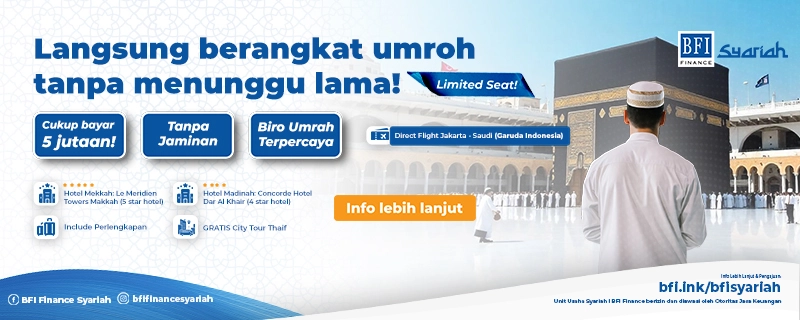The profit and loss report is one of the financial reports that can be used to assess a company's profitability. Through this report, you can find out the company's financial condition in a certain time period.
So, for those of you who are curious about what an income statement is, its components, functions and benefits, types and examples and how to make one, you can check the complete review below.
1. What is an Income Statement?
An income statement is a financial report that focuses on knowing the income and expenses of a company in a certain time period. Another term for an income statement is a profit and loss statement or income statement.
In the profit and loss report, you can see important things related to company operations, management efficiency and business sectors that are not performing well.
Apart from that, this financial report also has four main components, namely income, expenses, profits and losses.
To find out a company's profits and losses, you need to subtract all revenues from various expenses. Starting from operational to non-operational costs, for example taxes, sales costs, administrative costs and others.
2. Components of the Income Statement
The following is an explanation of the four components in the income statement, namely:
2.1 Income (Revenue)
Revenue reflects the increase in assets or inflow that the company generates through various operational activities. To find out the value of income, you can get it from the total gross income minus discounts, returns and other allowances.
Here are some of the main components of income, namely:
2.1.1 Revenue from Sales
Revenue from sales is the main income that a company obtains from selling products or services.
2.1.2 Income from Interest
Apart from income from sales, there is also income earned from interest. Usually, the company gets this income from investment results, such as bonds, deposits and loans.
2.1.3 Income from Others
This income the company obtains from other sources outside the sale of products or services. For example, income from rentals, profits from sales of fixed assets and profits from foreign exchange differences.
2.2 Expenses or Expenses
Expenses or costs (expenses) describe the expenditure or use of assets that give rise to liabilities in a certain period. Usually, expenses arise because there is delivery of goods, production and other operational activities.
Several main components in expenses or costs, namely:
2.2.1 COGS (Prices of Sales)
COGS (Cost of Sales) is an item that combines direct costs related to the production or sale of products in order to obtain income. If the company operates in the service sector, then its COGS becomes Cost of Sales.
What is included in direct costs is labor costs, raw materials, spare parts and other cost allocations.
2.2.2 Operating Costs
These costs are related to the company's operational activities, such as administrative, sales or marketing costs and depreciation costs.
2.2.3 Interest Costs
If a company borrows funds from other parties, such as banks or bonds, then there will be interest costs that must be incurred.
2.2.4 Tax Fees
Tax costs are costs that companies must pay to the government on a regular basis. Make sure the company is not late in paying taxes so that you don't have to incur other costs, such as fines.
2.2.5 Other Fees
Other costs are costs that are not included in the previous categories. For example, bad debt losses, restructuring costs and fines.
2.3 Profit (Profit)
Profits can arise when there is an increase in equity due to company transactions, income or investments obtained from the business owner himself.
There are two types of profits in the income statement, namely:
2.3.1 Gross Profit
Gross profit is the profit that a company makes from selling products or services.
To calculate gross profit, you just need to subtract revenue from sales from COGS.
2.3.2 Net Profit
Meanwhile, net profit is the final profit that the company obtains after deducting all expenses.
The calculation method is:
Net profit = gross profit - operating expenses - interest expenses - tax expenses - other expenses.
2.4 Loss
Meanwhile, losses can arise due to a decrease in equity due to transactions or expenses experienced by the company as well as reductions for business owners.
The formula for determining losses is income minus expenses.
3. Functions and Benefits of Profit and Loss Reports
The income statement has several functions and benefits that companies can get, namely:
3.1 Conduct Evaluations Regarding Company Performance
Through the profit and loss report, you can find out whether the company has increased income or losses. Therefore, as a business owner, you can make decisions so that it continues to grow and face various competition in the market.
3.2 Assess Risk
In every business, there are risks that must be faced. Through profit and loss reports, you can minimize risks that could occur without prior suspicion.
3.3 Making the Company Develop
As a business owner, you are able to assess whether various expenses are effective or not. So, it is possible for the company to continue to develop in the future.
3.4 Analyzing Company Strategy
The next function and benefit of the income statement is to carry out analysis related to company strategy. Can the strategy you get make the company earn maximum income every month or vice versa? If the strategy is not suitable, you can replace it with a new, more appropriate strategy.
3.5 Supporting Factors for Company Reputation
If your company has a bad profile, surely investors or shareholders won't want to invest in your company, right?
Therefore, you must understand the profit and loss report so you can know what needs to be improved in the business. If the company profile looks good, healthy and promising, investors will definitely come to invest their money.
3.6 Corporate Benchmarking
Furthermore, the profit and loss report can also be a benchmark for companies in the market. Therefore, companies can compete competitively with their competitors.
3.7 Evaluation of Costs Incurred
Have you ever wondered where most of your business expenses go?
The profit and loss report can show what costs you have incurred, whether they cost the most or the least amount of business finances.
Not only that, you can also find out how much it costs to produce goods or services.
3.8 Knowing Company Movements or Trends
Profit and loss reports can record company trends over a certain period of time, thereby helping management when analyzing and evaluating company performance, profits and losses.
If you are able to understand company movements or trends, management can take the right steps to improve your company's performance.
3.9 Assists in Financial Planning
Lastly, the function and benefit of the income statement is to assist in the company's financial planning for the future. Because, you can use the information contained in the report to plan the next period's budget.

4. Types and Examples of Income Statements
There are two types of profit and loss reports that you can see along with examples, namely:
4.1 Single-step Income Statement
Single-step income statement is a simple type of report because the calculations are not complicated. This report has several advantages, namely that there is no need to make detailed financial reports and investors can understand the report easily.
Apart from that, shareholders can also be helped by only focusing on net profit to describe the company's overall operations.
Simply put, the calculation formula used in the single-step income statement is:
Net Profit (Net income) = Total income (revenue (revenue) + profit (profit)) - Total costs (expenses (expenses) + losses (loss))
In this type of report, you must add up all the income and sort it in one column. Meanwhile, the total costs are also added up, then sorted in different columns. Then, total costs are subtracted from total income to calculate net profit.
To make it clearer, you can see the following example of a single-step income statement:
|
PT CINTA ASIH Income Statement 16 Juli 2023 |
|
Revenue |
|
Net Sales Rp 70.000.000 Rent Income Rp 15.000.000 Total Revenue Rp 85.000.000 |
|
Expenses |
|
Selling Expenses Rp 3.500.000 Salaries Expenses Rp 5.000.000 Transportation Expenses Rp 2.500.000 Electricity Expenses Rp 1.000.000 Other Expenses Rp 1.500.000 Total Expenses (Rp 13.500.000) |
|
Income before tax Rp 71.500.000 Tax (Rp 1.000.000) |
|
Net Income Rp 70.500.000 |
4.2 Multi-Step Income Statement
In contrast to the previous report, the multi-step income statement is a more complete and detailed form of income statement.
A multi-step income statement will separate certain types of income and expenses into several categories. Through this type of profit and loss report, information related to the company's financial performance can be seen in detail later.
In the report, you can first categorize several revenues, such as gross income, net sales and sales deductions.
Likewise with costs, you can divide them into several categories, such as operational costs, cost of goods sold, interest costs, interest income and tax costs.
Then, you can add up all cost categories, then subtract them from net income to calculate net profit.
Through multi-step income statement records, you can see complete information regarding the company's performance, finances, gross profit margin, net profit and operational profit.
Of course, this information really helps management in making the right business decisions and helps investors know the company's financial health in detail.
The following is an example of a multi-step income statement that you can pay attention to:
|
PT CINTA ASIH Income Statement 16 Juli 2023 |
|
Income Revenue |
|
Sales Rp 650.000.000 Sales Return Rp 60.000.000 Sales Discount Rp (55.000.000) Net Sales Rp 650.000.000 |
|
Cost of Good Solds |
|
Beginning Inventory Rp 25.000.000 Net Purchase Rp 15.000.000 Ending Inventory (Rp 7.000.000) Cost of Good Solds Rp 47.000.000 |
|
Gross Margin Rp 603.000.000 |
|
Operational Expenses |
|
Selling Expenses Rp 30.000.000 Administrative Expenses Rp 10.000.000 Electricity and Transportation Expenses Rp 15.000.000 Total Operating Expenses Rp 55.000.000 |
|
Operating Income Rp 548.000.000 |
|
Revenue and Other Expenses |
|
Interest Income Rp 10.000.000 Damaged Items (Rp 5000.000) Other Expenses (Rp 16.000.000) Total (Rp 31.000.000) |
|
Income Before Tax Rp 517.000.000 |
|
Income Tax Rp 13.000.000 |
|
Net Income Rp 504.000.000 |
5. How to Make a Profit and Loss Report
For those of you who want to try making a profit and loss report, you can follow the following method:
5.1 Determine the Reporting Period
The first way to make a profit and loss report is that you must first determine the reporting period.
Determining the reporting period is very important so that the report you make looks neat and easy to understand. If the format is irregular, the company will have difficulty carrying out evaluations.
The reporting periods in question are weekly, monthly, quarterly or per semester. Determine it yourself according to the needs of each company. So that there aren't too many reports, it's best to make weekly or monthly profit and loss reports.
5.2 Create Balance Reporting
After determining the reporting period, then just start making reports. Don't worry, you don't need to do the balance reporting manually. Use a cloud-based accounting application or software that you can operate. That way, the trial balance results that you calculate can be calculated more quickly, concisely and precisely.
Making balance reports via an application or accounting software is indeed fast, but if you haven't mastered it yet, you can try calculating it manually first.
The method starts by writing down the remaining balance at that time. Then, calculate the profit or loss from the product you successfully created. Make sure the calculations are correct and there are no errors when calculating them.
5.3 Calculate Gross Income
If you have made a balance report, then you can start calculating gross income. This income comes from all the product sales that you have made.
To calculate gross income, simply enter all items in the income column of the trial balance report. Then, enter the total amount of income in the income line of the income statement.
5.4 Ascertain the Cost of Selling Goods
Next, you have to determine the cost of selling the goods, OK? The cost of selling goods consists of labor costs, raw materials and overhead for the goods or services. Make sure the value you write is correct to avoid calculation errors.
The calculation method is to include all types of goods in the cost of goods section of the balance report. Then, list the total cost of goods at the bottom of the income row.
Remember, in this section you must have a list of daily sales records. Especially if your business is a shop that has a special price tag. The goal is that the price of the goods sold that you record is no different from the reality.
5.5 Know Gross Margin and Operating Costs
When making a profit and loss report, you also have to know the gross margin and operational costs.
To find out gross margin, you can subtract total revenue from the sales price of the product or service. Next, add the operational costs contained in the trial balance.
You can enter the total amount in the report as part of sales costs and administrative costs. You can place the writing below the gross margin.
5.6 Calculate Net Income Before Tax Deduction
Apart from gross income, calculating net income is also important in the income statement. If the calculations are not correct, then you will have difficulty knowing the profits and losses that the company will make.
Therefore, make sure to calculate your net income carefully and carefully. Net income can be calculated by subtracting the total sales and administration costs from the gross margin so that the income value will appear before tax is deducted.
You can enter the results of the net profit calculation into the report, specifically at the bottom of the report itself.
5.7 Enter Tax Value
Finally, it's time to include the income tax value in the income statement. It's very easy to calculate, you just need to reduce your total net income by the tax value of the income you earn.
So, the calculation result is the actual net income value obtained from the business. The tax value is at the bottom of the report, OK?
This is the information regarding profit and loss reports that you can find out in full. Well, it's not too difficult to make a report, right? Make sure the format and calculations are correct so that they can be used to improve and develop the company's performance for the better.
If you need additional capital for your business, BFI Finance is ready to help you! BFI Finance provides business capital financing with BPKB guarantees for motorbikes, cars and house certificates with high disbursement values. Also enjoy the benefits of competitive interest rates and long tenors. BFI Finance is a trusted financing company that has been established since 1982 and is registered and supervised by the OJK, so don't hesitate to apply for financing from now on! #SelaluAdaJalan with BFI Finance.






